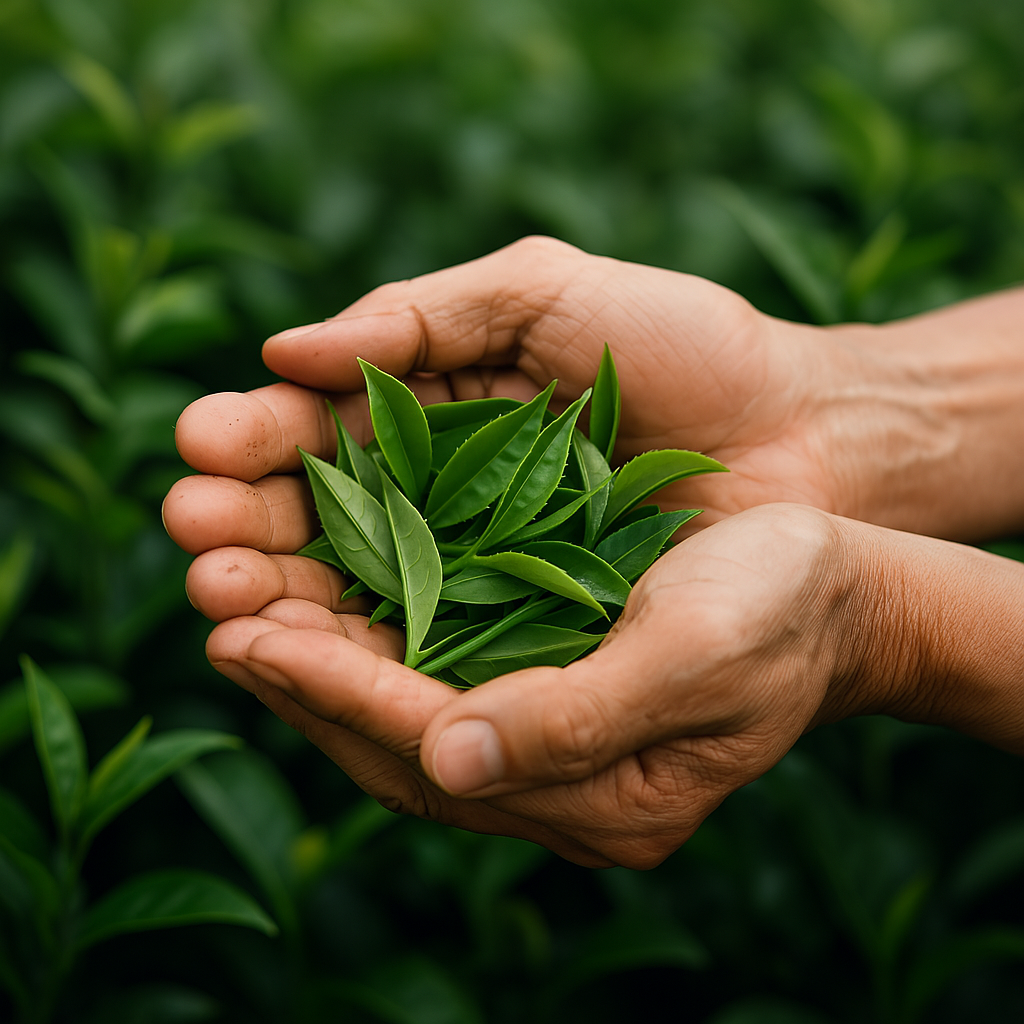
From leaf to cup - How our matcha is made
Share
There’s something magical about matcha - its vibrant green color, calming aroma, and smooth, earthy flavor. But what makes it truly special is the care, tradition, and craftsmanship that goes into every step of its journey from farm to your cup.
Here’s how our authentic Japanese matcha is made, from leaf to cup:
1. Shade-growing: preparing the leaves
About 3–4 weeks before harvest, our tea farmers in Japan begin the process of shade-growing the tea plants. By covering the leaves with special bamboo mats or fabric, they limit sunlight exposure. This encourages the plants to produce more chlorophyll and L-theanine, which gives matcha its signature vibrant color and calming effect.
2. Harvesting by hand
Once the leaves are dark, tender, and ready, they’re hand-picked to ensure only the youngest, finest leaves are selected. This step is critical for quality. Older, tougher leaves can make the matcha bitter or dull in flavor. The best matcha starts with the best leaves.
3. Steaming and drying
Immediately after harvesting, the leaves are steamed to halt oxidation — a step that preserves their color and nutrients. Then they’re gently air-dried, preparing them for the next phase. This steamed, unrolled leaf is known as tencha, the raw material used to make true matcha.
4. De-stemming and sorting
Before grinding, the tencha leaves are de-stemmed and de-veined, leaving only the softest, most nutrient-rich parts of the leaf. These are sorted to ensure only the highest-quality material moves forward in the process.
5. Stone grinding
The dried tencha is ground using traditional granite stone mills - a slow and careful process that takes about an hour to produce just 30–40 grams of matcha. Why so slow? Because fast grinding would burn the delicate leaves and destroy the flavor and nutrients. Stone grinding preserves the matcha’s smooth texture, color, and aroma.
6. Packaging and freshness
Once ground, the matcha is immediately sealed in airtight, light-proof containers to lock in its freshness and prevent oxidation. From there, it's shipped in small batches to ensure you get the freshest possible matcha.
7. Your cup
The final step is yours: sifting, whisking, and sipping. Whether you enjoy it as a pure bowl of tea or as part of a creamy latte, every sip of our matcha is a taste of centuries-old craftsmanship, rooted in the heart of Japan.
From leaf to cup, our matcha is more than tea - it’s a story of patience, precision, and purpose.
